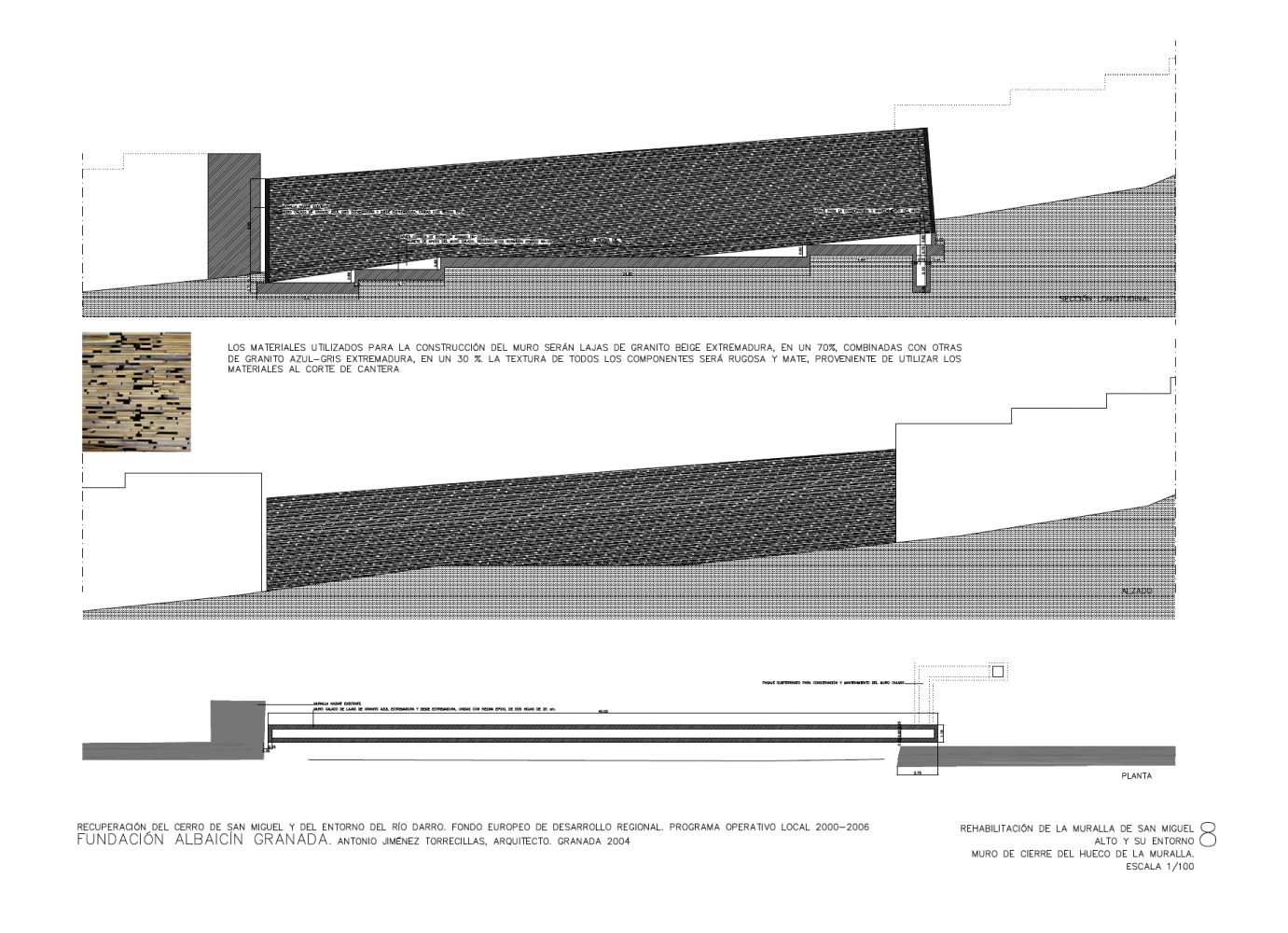Military Heritage
Muralla nazarí, Alto Albayzín (Nasrid Wall, Upper Albayzin)

Muralla nazarí, Alto Albayzín (Nasrid Wall, Upper Albayzin) Recovery of the Cerro de San Miguel and the Darro river area. Rehabilitation of the wall of San Miguel Alto and its surroundings) Granada, Andalusia, SPAIN. 2002-2005 Project; 2005-2006 Construction. Antonio Jiménez Torrecillas. Interior view of the Wall. Photography: David Arredondo and Alberto García, 2006. Source: Antonio Jiménez Torrecillas Studio.


Muralla nazarí, Alto Albayzín (Nasrid Wall, Upper Albayzin) Recovery of the Cerro de San Miguel and the Darro river area. Rehabilitation of the wall of San Miguel Alto and its surroundings) Granada, Andalusia, SPAIN. 2002-2005 Project; 2005-2006 Construction. Antonio Jiménez Torrecillas. Photomontage of the wall before and after the intervention. Source: Antonio Jiménez Torrecillas Studio.

Muralla nazarí, Alto Albayzín (Nasrid Wall, Upper Albayzin) Recovery of the Cerro de San Miguel and the Darro river area. Rehabilitation of the wall of San Miguel Alto and its surroundings) Granada, Andalusia, SPAIN. 2002-2005 Project; 2005-2006 Construction detail. Antonio Jiménez Torrecillas. Wall enclosure wall of the wall opening. Section, elevation and plan. Source: Antonio Jiménez Torrecillas Studio.
Military heritage comprises of any structure built with either natural (i.e., botanical, or geological) or synthetic materials, by a community to protect themselves from assailants or, in some countries today, for the maintenance of public safety, Such structures include, works of military engineering, fortifications, arsenals, harbors and naval Shipyards barracks, military bases, barracks with military houses, bunkers, testing fields, and other enclaves and constructions built or used for military, offensive and defensive purposes. Military cultural landscapes include but are not limited to territorial or coastal defense installations and earth Works, which have made it possible to conserve natural spaces that, in several cases, have been transformed into natural parks and protected areas. Their presence in historically warlike territories such as the Mediterranean has given them a series of values similar to those of other buildings and heritage sites, but they also possess specific values that must be carefully studied, analysed and conserved, as they form part of our past and recent history and have conditioned the evolution of our cities and territories.